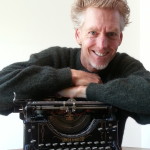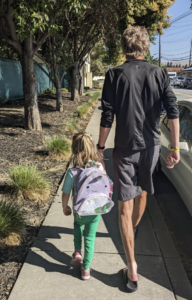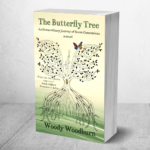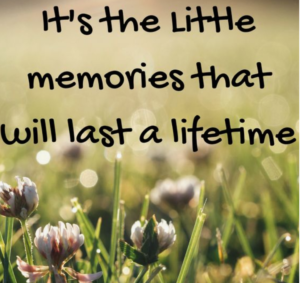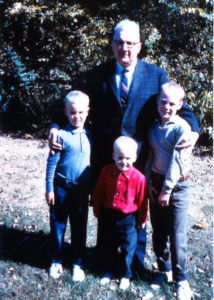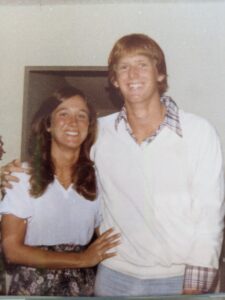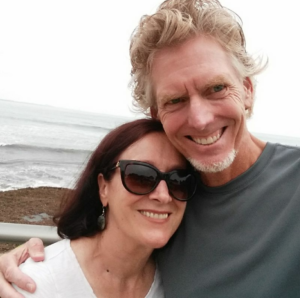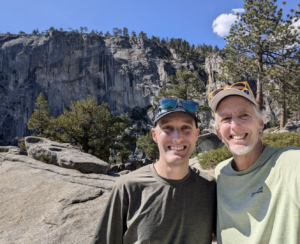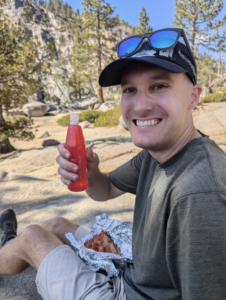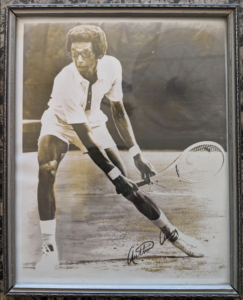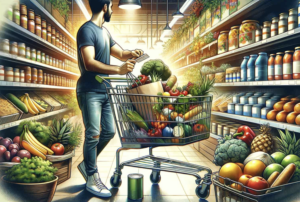Woody’s new novel “The Butterfly Tree” is available at Amazon (click here), other online retailers, and orderable at all bookshops.
From Woody’s column archives, August of 2012, the sentiments resurfacing recently while dropping his daughter Dallas off at the airport following a solo visit home from the Bay Area where she now lives.
*
When it comes to saying hello to a new school year, the words of 19th Century French novelist Jean-Baptiste Alphonse Karr seem perfectly apropos: “Plus ca change, plus c’est la meme chose.”
The more things change, the more they remain the same.
On her very first “first” day of school—at Ventura’s TLC Preschool—my daughter cried when I dropped her off in the classroom. It was a good 10 minutes before she was finally able to release me from her tight sobbing hug.
While the morning goodbyes slowly grew from tearful to cheerful as that school year progressed, the first day of TLC the following year was once again a messy runny-nosed red-eyed event.
Her first day of kindergarten at Poinsettia Elementary School was barely easier; fighting to hold back her tears with all her might, she failed.
Plus ca change, plus c’est la meme chose.
Her first day of first grade was tearless, but certainly not fearless. Second grade was a little smoother still; her first day at Cabrillo Middle School better yet; and the first day of her senior year at Ventura High was a dancing cakewalk, but on her first day of college, or rather Move-In Day, my then-18-year-old daughter once again became a tearful 3-year-old preschooler. Instead of emblazoned with “USC” her sweatshirt could have read “TLC.”
My wife’s salty floodgates opened in turn, but I managed to maintain my composure as we walked away down the hall. My mistake was pausing to look back, hoping to see an empty doorway and thus my daughter inside her room having happily begun her college life. Instead, she was still in the hallway waving at me, her face sad and wet, her eyes red and puffy, her nose runny—and never have I seen her look more beautiful, unless it was on the first day of a school year when she was 3 or 4 or 5.
Plus ca change, plus c’est la meme chose.
Do not be mistaken by her homesick hugs. My daughter is strong and confident and accomplished and embraces adventure. She has traveled extensively and thrice studied abroad. She loves arriving at new places—it is just she also hates leaving familiar old ones.
Yes, she has always been great at hellos and lousy at goodbyes and this is a lovely quality. Her tight hugs of greeting make one feel deeply loved; her wet envelopments upon parting somehow even more so.
Things change. Instead of a school bus, my daughter took an airplane this year on her way to her last first day of school, at Purdue, where she enters her final year of its M.F.A. creative writing program.
Things stay the same. At the Rubicon for passengers to continue on into the long security line at the airport it was a good five minutes until my daughter released me from her sobbing embrace. Over the years we have tried pulling-the-Band-Aid-off-quickly, but such hurried goodbyes causes more tears, not fewer. And so we linger, aging father and Daddy’s Little Girl Still.
After we eventually parted and I walked away a short distance down the terminal hallway, I did what I always do: I turned around for one final glimpse at her. I can never resist. Usually, she is well into the security line by then and can only smile and wave.
This time, however, she was not yet trapped. A grandmotherly woman watching the scene unfold said aloud, but not unkindly: “Rookie mistake. Never look back.”
I disagree. I was rewarded with seeing my 25-year-old daughter age 3 again as she rushed over to give me one last wet-and-wonderful first-day-of-school hug goodbye.
Plus ca change, plus c’est la meme chose.
* * *
Essay copyrights Woody Woodburn
Woody’s new novel “The Butterfly Tree” is now available in paperback and eBook at Amazon (click here), other online bookstores, and is orderable at all bookshops.
*
Woody writes a weekly column for The Ventura County Star and can be contacted at WoodyWriter@gmail.com. Follow him on Twitter and Instagram at @woodywoodburn.

